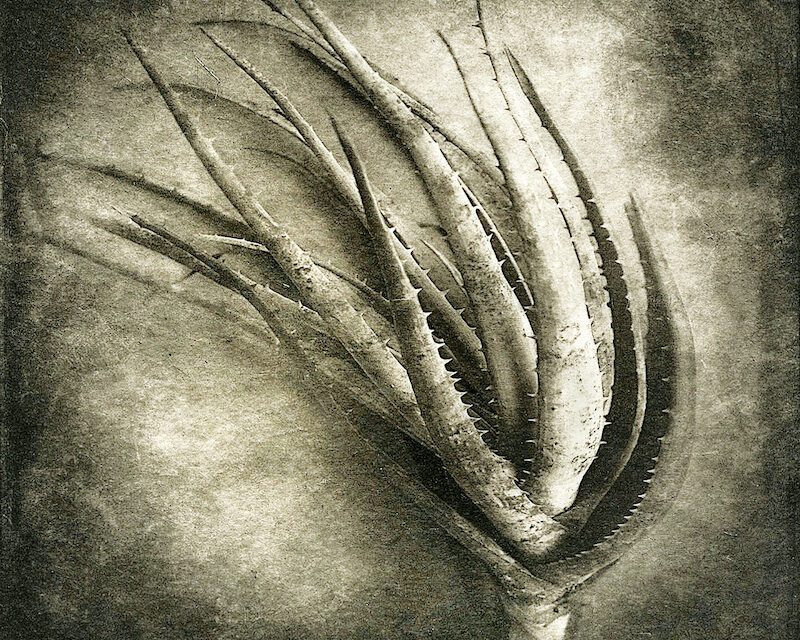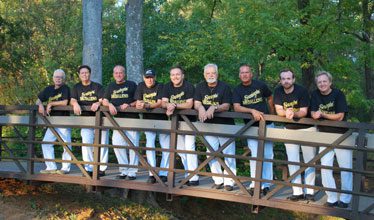An epic exhibit at USCB by artists Susanna Glattly and Gary Geboy
By Teresa Bruce
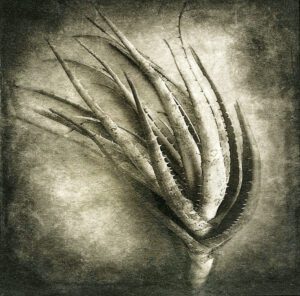
Gary Geboy
Trees can’t physically move, or so thought Macbeth in fateful, false security before Birnam Wood to Dunsinane came. Artists Susanna Glattly and Gary Geboy never doubt the power of trees. Instead they harness that power in a show opening Friday at University of South Carolina Beaufort (USCB) Center for the Arts, hoping their ethereal charcoal drawings and alternative process photographs will change the way mere mortals see the forest for the trees.
The scale of the drawings and photographs on view beginning October 13th at USCB is no coincidence. Both artists come from cinematic backgrounds: Susanna Glattly as a scenic artist for feature films and TV and Gary Geboy as Director of Photography for documentaries and corporate films. Both started looking at the Lowcountry through the lens of newcomers, after moving to Beaufort with their respective spouses. But after twenty years, each artist has grown roots entangled with the story of trees.
The “Super-Natural” opening reception on Thursday, October 19th is a red-carpet moment
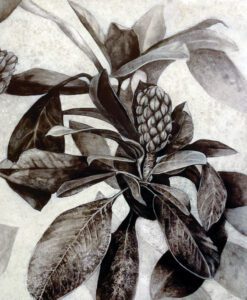
Susanna Glattly – Saturday’s Child
for Glattly and Geboy’s mutual subjects, but not necessarily one with a happy Hollywood ending.
“Some of my large-scale constructions take months of work in the darkroom,” says Geboy. “But it all starts with a split-second snap of the shutter. And honestly, that’s how fast the pace of change in the Lowcountry feels to me. In another 20 years, I might not be able to find these massive trees and the zen of undisturbed horizons over the creeks and marshes.”
Glattly agrees, adding that the disappearance of any tree feels like a personal loss. She considers her giant subjects neighbors, individual sitters who have graciously agreed to pose for an intimate portrait.
“The large format of my drawings demands from the viewer the gravitas these trees deserve, especially in light of the runaway development and climate issues that threaten our Lowcountry ecosystem.”
Super-Natural is the second time USCB Center for the Arts Director Bonnie Hargrove has paired Geboy’s photography with the work of other artists. Back in 2012, a show called “Organics” featured fiber artist Kim Keats’ baskets and bark sculptures along with Geboy’s dramatic, moody landscapes.

Gary Geboy
“For this new exhibit, it’s not just the subject matter that connects Susanna and Gary’s _

Susanna Glattly – Resurrection
work,” says Hargrove. “It’s how each of them experiments and plays with their mediums. If you think charcoal drawings are all soft and blurry you’ll be amazed at the detail and texture of Susanna’s pieces. And if you associate black-and-white photography with fashion or news then the tones and painterly qualities of Gary’s work will blow you away.”
Another link between the work of both artists is that their materials come from their subject. Geboy’s photographs are individually printed on handmade, archival paper – made from trees and natural fibers – and he searches for antique wooden frames to repurpose with fresh compositions.
Glattly uses fragile stalks of charcoal and graphite to make her large-scale, monochromatic drawings. Charcoal actually is wood-willow vine that has been heated at high temperature without oxygen, and then compressed. “It yields the deep darks and smoky effects that embody the ethos of the natural wonders I’m trying to capture,” she explains.
GEEK CORNER: the artists explain their technical process:
Glattly: “Typically, drawings are protected by glass, creating a barrier between the viewer, and introducing problems with glare, weight,

Susanna Glattly –Quercus Virginiana
and expense. Large scale only compounds these issues. So I am experimenting with substrates – mounting quality hot press watercolor paper to hand-made panels, and creating textured clay board panels with archival ingredients to come up with a rigid substrate that is more durable than paper but accepts charcoal in a way that preserves the freshness of a work on paper.
But there is still the challenge of protecting the finished work. The very qualities I love most about charcoal – its richness and velvety matte sheen- would be ruined by typical varnishes. I fix my work with non-toxic casein and wax-workable fixative originally formulated by Edgar Degas for his pastels, and now produced by Spectrafix. I finish it off with a final coat of archival flat ultraviolet, protective water-borne varnish that I’ve used to diminish glare on scenery and movie sets.”
Geboy: “Platino-palladiotype (platinum palladium) printing is so old it’s new again, with prints valued higher and favored by art
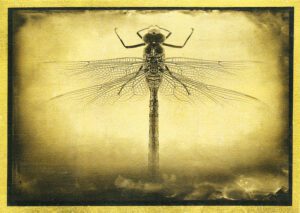
Gary Geboy
collectors today for their longevity and unmatched tonal range. When you coat paper in these precious metals and expose the image by ultra-violet light, this alternative process reveals a sensuous luminosity. Fun facts about the process:
- it was patented in the mid-1870s, pre-dating silver gelatin prints
- requires 1 million times more light than traditional B&W or color photography
- is more stable than gold, making it the most durable of all photographic processes
Working with toxic metals involved in platinum or palladium photography isn’t for the faint-hearted. But I figure I’m old enough to take the risk in my Pigeon Point darkroom.”
“Super-Natural” opens Friday, October 13th and will hang on the walls of USCB’s Center for the Arts on Carteret Street in Beaufort until December 18th. Meet the artists at the exhibit reception on Thursday, October 19th from 5:30pm – 7:00pm.

